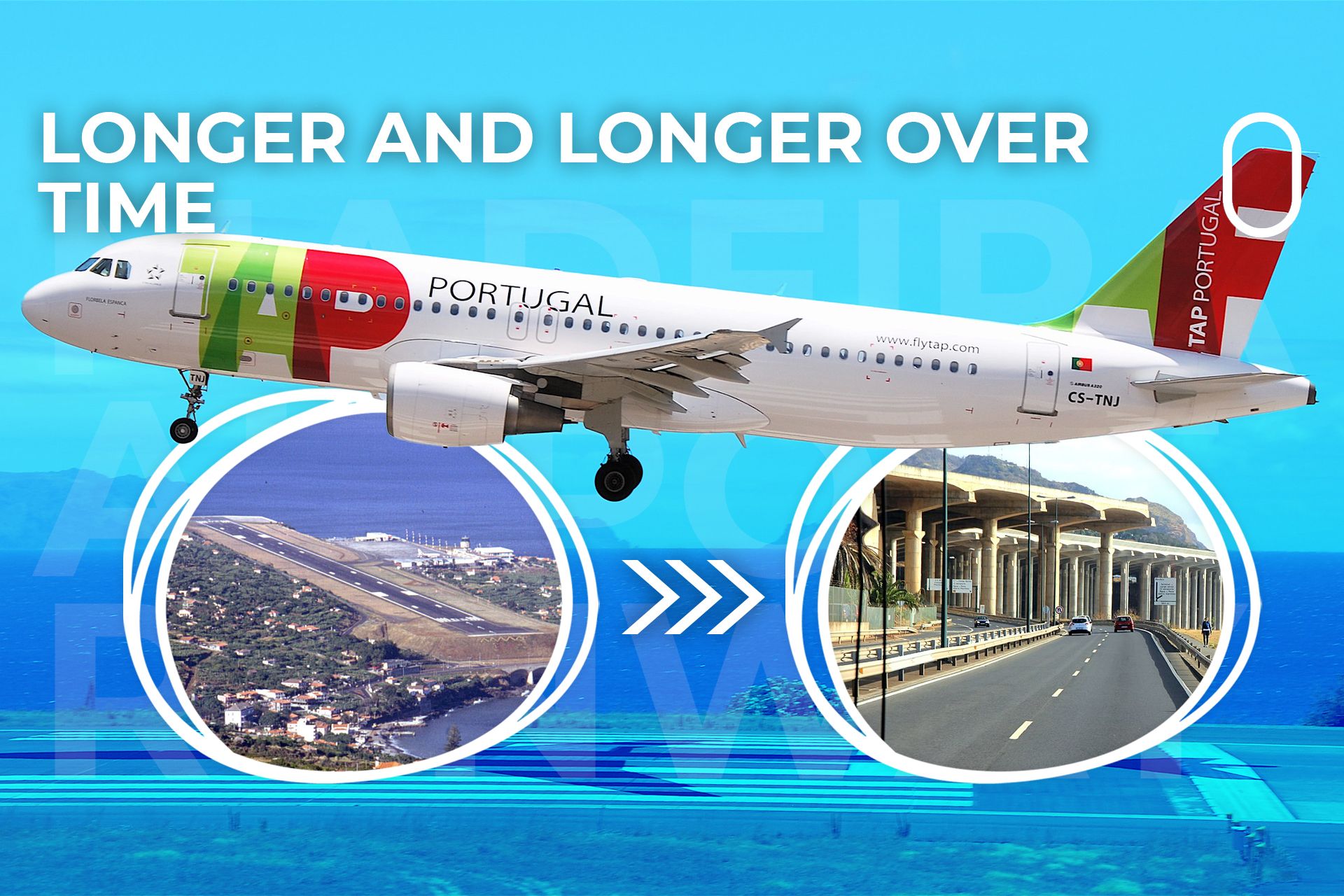Madeira Airport (FNC), also known informally as Funchal Airport and formally as Cristiano Ronaldo International Airport, is the only airport serving the Portuguese island of Madeira. It is located in a difficult area, surrounded by mountains and the sea, making both the flying approach and airport construction difficult. There have been two major runway extensions, though, as airport use has increased – the most recent involving an impressive bridge-based extension.
The original short runway
Madeira Airport opened in 1964 with just one runway (05/23, as it remains today), 1,600 meters (5,249 feet) long. Tourism had begun expanding on the island, and an airport was seen as vital to support this. Landing at the airport at this time was considered one of the most challenging in Europe.
It remains difficult today with changeable weather and wind conditions, but with the short runway, it was even more so. The approach for runway 05, in particular, requires a tight turn due to surrounding mountains and a short final approach.
The first extension in 1986
The decision was made in the late 1970s to extend the airport’s runway. This was driven by the increase in tourism, and thus air traffic, to the island. A longer runway would allow larger aircraft to land, and would also be safer by affording aircraft more runway for landings and takeoffs.
In November 1977, there was a devastating crash involving a Boeing 727 aircraft operated by TAP Air Portugal, which landed in poor weather (strong winds, rain, and low visibility) and made two missed approaches before attempting a final third approach. It touched down, but over 600 meters along the runway and running out of length fast. In the wet conditions, it started to hydroplane, and the pilots were unable to stop the aircraft before the end of the runway. It overshot and fell over the cliffs onto the beach below – of the 156 passengers and eight crew onboard, 131 were killed.

Related
45 Years Ago Today TAP Air Portugal Flight 425 Crashed In Madeira
The runway overshoot remains the Boeing 727’s 15th worst accident in history.
This crash highlighted the need for a longer runway at FNC. Work on the extension began in 1982 and would see the runway extended by 200 meters to a total length of 1,800 meters. The complex engineering project was completed in February 1986.
Second extension in 2002
Continued growth in tourism since the extended runway opened in the 1980s meant a further extension was soon considered. This time it was much harder as all available land had been used, so the runway would need to be extended over the sea. Landfill from the shoreline was not possible, and engineers instead opted to build the extension on a platform.
Construction started in 2000 – this time, the runway was extended to 2,781 meters (9,124 feet) and would be opened in October 2002. This impressive engineering feat was achieved by building a bridge 57 meters above the water, supported by a structure of 180 pillars.
This bridge, measuring 180 meters wide and just over a kilometer long, was sufficiently strengthened to carry the runway. The impressive design won an “Outstanding Structure Award” in 2004 from the International Association for Bridge and Structural Engineering.
Runway and airport improvements in 2016
Madeira Airport underwent an extensive renovation and upgrade program in 2016. While the runway was not extended as part of this, it was further strengthened, and the airport apron and taxiways were redesigned, increasing the airport’s usable area by 1,500 square meters.
Photo: kaskip | Shutterstock

Related
Why Madeira Airport’s Approach Is So Challenging
Difficult conditions on the Portuguese island often bring out the best in pilots.
The other part of this upgrade focused on the terminal and airport facilities and was the first major expansion since the airport opened. The terminal was extended with a new commercial area and larger passenger screening and waiting areas. The airport claims that with the new facilities, it can process up to 1,400 passengers per hour, up from 720 passengers.
Remains a challenge
Funchal is still a Category C airport. This means that there is a likelihood of certain issues during procedures such as takeoff, landing, and approaches. Other European Category C airports include Gibraltar, London City Airport, Chambéry, Innsbruck, Salzburg, Sion, and Santorini. As a result, flight crews have to undertake particular simulator training and sit in the flight deck’s jumpseat for takeoff and landings to be ready to perform flights to FNC.
As seen above, an SAS A320neo suffered a hard landing in January after encountering wind shear, forcing the aircraft to go-around and eventually land in Gran Canaria instead. Still, Funchal remains a popular tourist destination, with over four million passengers passing through last year. Madeira is also the birthplace of footballing legend Cristiano Ronaldo, after whom the airport is named. Despite the tricky operations, FNC will remain a passenger hotspot throughout the decade.
Have you flown into Madeira Airport? Do you recall the approach and the runway? Feel free to share your experiences in the comments.



